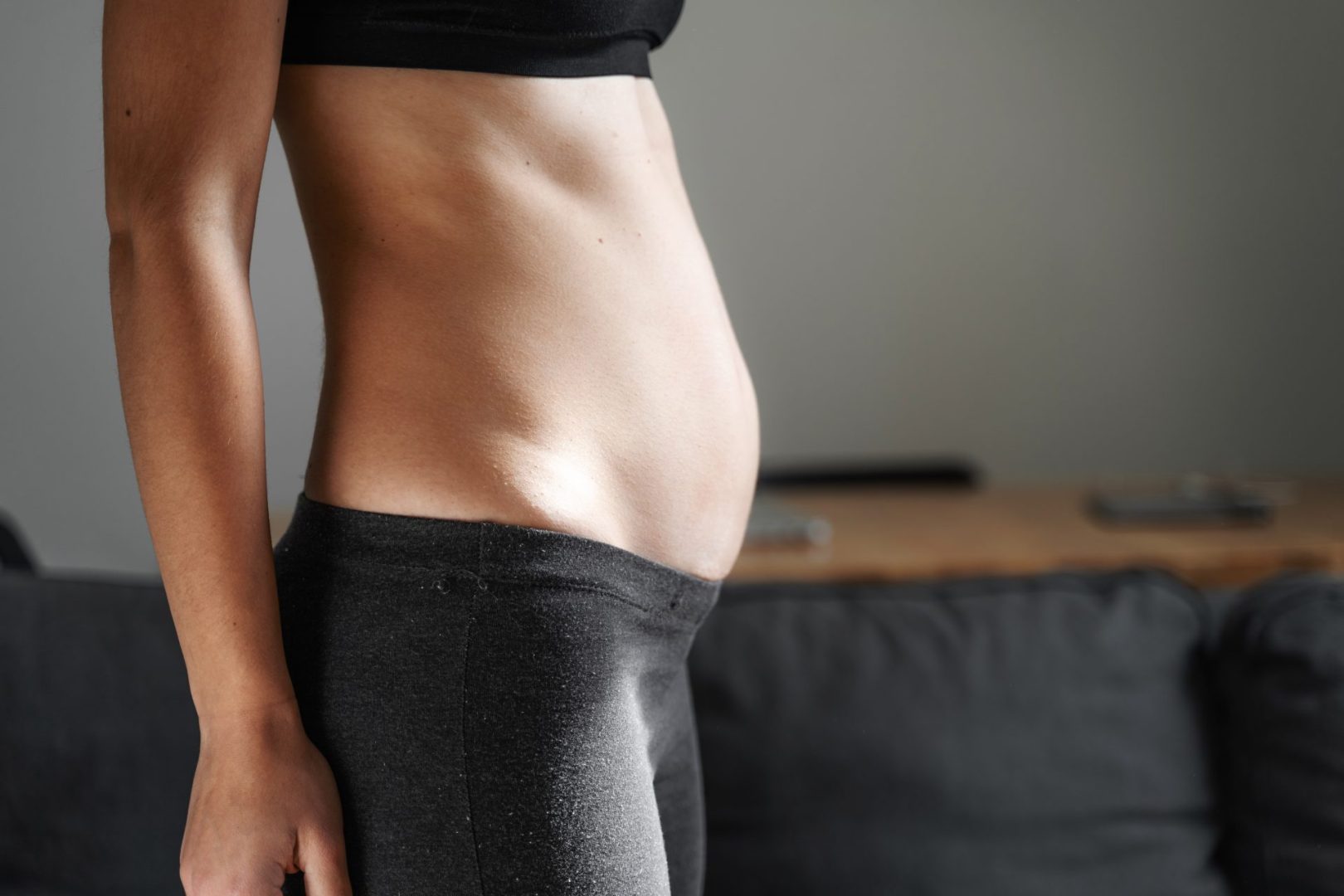The journey back to a flatter belly after pregnancy is one of the most common concerns new mothers face, yet it’s also one of the most misunderstood aspects of postpartum recovery. Your body has just completed one of the most remarkable transformations possible, creating and nurturing new life for nine months. The changes that occurred during pregnancy don’t simply disappear overnight, and expecting them to is both unrealistic and potentially harmful to your recovery process.
Understanding what actually happens to your abdominal area during pregnancy provides crucial context for your recovery journey. As your baby grows, your abdominal muscles stretch and separate to accommodate the expanding uterus. This separation, called diastasis recti, affects up to 60% of pregnant women and can persist long after delivery. Additionally, your core muscles, pelvic floor, and surrounding connective tissues all undergo significant changes that require time and proper rehabilitation to heal.
The postpartum period brings unique challenges that affect your ability to regain abdominal strength and appearance. Hormonal fluctuations continue for months after delivery, particularly if you’re breastfeeding. These hormones affect everything from joint stability to fat storage patterns. Sleep deprivation, stress, and the physical demands of caring for a newborn all impact your body’s ability to recover and respond to traditional fitness approaches.
Your timeline for recovery is deeply personal and depends on numerous factors including your fitness level before and during pregnancy, the type of delivery you experienced, whether you’re breastfeeding, and your individual healing process. Some women notice significant changes within a few months, while others require a year or more to see substantial improvements. Both scenarios are completely normal and reflect the complexity of postpartum recovery.
Understanding your postpartum core reality
The core muscles that once provided stability and support have been stretched, weakened, and repositioned during pregnancy. Your rectus abdominis muscles, commonly known as the “six-pack” muscles, may have separated along the midline to create space for your growing baby. This separation can range from minor to severe and affects not just appearance but also functional strength and stability.
Beyond visible muscle separation, the deep core muscles including the transverse abdominis, pelvic floor, and multifidus have also been impacted. These muscles work together as a coordinated system to provide spinal stability, support your organs, and facilitate proper movement patterns. When this system is compromised, it affects everything from posture to breathing to basic daily activities.
The connective tissue that holds your abdominal muscles together has also been stretched and may remain soft and pliable for months after delivery. This tissue needs time to regain its pre-pregnancy tension and strength. Rushing into intense abdominal exercises before this tissue has recovered can actually worsen separation and delay healing.
Your ribcage position may have changed during pregnancy as your diaphragm was pushed upward to make room for your growing uterus. This altered ribcage position affects your breathing patterns and core muscle activation. Learning to restore proper ribcage alignment becomes essential for effective core recovery.
Strategy number 1: Master breathing for core activation
Proper breathing forms the foundation of effective core recovery and is often the most overlooked aspect of postpartum fitness. During pregnancy, your breathing patterns adapt to accommodate your growing baby, often leading to shallow chest breathing rather than deep diaphragmatic breathing. Retraining your breathing system is crucial for core recovery.
Diaphragmatic breathing involves expanding your ribcage and belly as you inhale, then gently drawing everything back together as you exhale. This breathing pattern naturally activates your deep core muscles and begins the process of retraining your core system. Practice this breathing while lying down, sitting, and eventually during movement.
The exhale phase of breathing is particularly important for core activation. As you breathe out, focus on gently drawing your deep abdominal muscles inward and upward. This isn’t about forcefully sucking in your belly, but rather about creating gentle, coordinated muscle activation that supports your spine and organs.
Breathing exercises can be started immediately after delivery, even while you’re still in the hospital. These gentle exercises don’t strain healing tissues but begin the important process of reconnecting with your core muscles. Many women find that consistent breathing practice significantly improves their core strength and reduces back pain.
Strategy number 2: Address diastasis recti properly
Diastasis recti, or abdominal separation, requires specific attention and cannot be ignored if you want to achieve a flatter belly. This condition involves the separation of your rectus abdominis muscles along the linea alba, the connective tissue that runs down the center of your abdomen. The separation can occur anywhere from just below your ribcage to your pubic bone.
Checking for diastasis recti is something you can do at home. Lie on your back with knees bent and feet flat on the floor. Place your fingers horizontally just above your belly button and lift your head slightly off the ground. Feel for a gap between the muscle bands. A separation of more than two finger widths typically indicates diastasis recti that needs attention.
Traditional crunches and sit-ups can actually worsen diastasis recti by creating excessive intra-abdominal pressure that pushes against the healing connective tissue. Instead, focus on exercises that promote gentle muscle activation and support the healing process. Transverse abdominis exercises, modified planks, and specific breathing techniques are more appropriate choices.
The healing process for diastasis recti varies significantly between individuals. Some women see improvement within a few months of consistent, appropriate exercise, while others may need six months to a year or more. Severe cases may require professional intervention from a physical therapist specializing in women’s health.
Strategy number 3: Prioritize posture and alignment
Pregnancy significantly affects your posture, and these changes don’t automatically correct themselves after delivery. The weight of your growing belly pulls your center of gravity forward, often leading to an exaggerated arch in your lower back, rounded shoulders, and a forward head position. These postural changes affect how your core muscles function and can contribute to a protruding belly appearance.
Breastfeeding and caring for your baby often reinforce poor postural habits. Constantly looking down at your baby, carrying car seats, and feeding in awkward positions all contribute to rounded shoulders and a forward head posture. These positions make it difficult for your core muscles to function properly and can create the appearance of a larger belly even when you’ve lost weight.
Correcting your posture requires conscious effort and consistent practice. Focus on lengthening the back of your neck, drawing your shoulder blades back and down, and finding a neutral spine position. This alignment allows your core muscles to function optimally and immediately improves your appearance.
Strengthening the muscles that support good posture becomes essential for long-term success. Your upper back muscles, deep neck flexors, and glutes all play crucial roles in maintaining proper alignment. Weak glutes, in particular, can contribute to an anterior pelvic tilt that makes your belly appear more prominent.
Strategy number 4: Implement progressive core strengthening
Once you’ve mastered breathing and basic activation, progressive core strengthening becomes the next crucial step. This progression must be gradual and respect your body’s healing timeline. Starting too aggressively or with inappropriate exercises can set back your recovery and potentially cause injury.
Begin with static exercises that challenge your core stability without creating excessive strain. Modified planks, where you start on your knees and progress to your toes, provide excellent core strengthening. Dead bugs, where you lie on your back and move opposite arms and legs while maintaining a stable core, teach coordination and strength simultaneously.
Bird dog exercises, performed on hands and knees while extending opposite arms and legs, challenge your core stability in multiple directions. These exercises also strengthen your glutes and upper back, supporting better posture. Wall sits combined with arm movements provide core challenge while supporting your back.
As your strength improves, you can progress to more challenging variations. Single-leg stands, walking planks, and stability ball exercises all provide increased challenge as your core system becomes more capable. The key is progression that matches your ability level and doesn’t cause pain or excessive fatigue.
Strategy number 5: Focus on functional movement patterns
Functional movement patterns that mimic daily activities provide the most practical benefits for new mothers. These movements train your core to work effectively during the tasks you perform regularly, such as lifting your baby, carrying groceries, or getting up from the floor.
Squatting movements are essential for new mothers who frequently need to pick up toys, lift car seats, and get down to their child’s level. Proper squatting technique engages your core while strengthening your legs and glutes. Focus on keeping your chest up, weight in your heels, and knees tracking over your toes.
Carrying exercises prepare you for the reality of carrying your growing child, diaper bags, and other necessities. Farmer’s walks, where you carry weights at your sides, and front-loaded carries, where you hold weight at your chest, both challenge your core while building practical strength.
Rotational movements help restore the ability to reach and twist safely. Wood chops with resistance bands or light weights train your core to handle rotational forces while maintaining spinal stability. These movements are particularly important as your child becomes more mobile and you need to react quickly to their movements.
Strategy number 6: Optimize your nutrition approach
Nutrition plays a crucial role in achieving a flatter belly after pregnancy, but the approach must be modified for the postpartum period. Extreme calorie restriction is not appropriate, especially if you’re breastfeeding, as it can compromise your energy levels, milk production, and overall recovery.
Focus on nutrient-dense foods that support healing and provide sustained energy. Protein becomes particularly important for tissue repair and maintaining muscle mass during weight loss. Include high-quality protein sources at each meal to support your recovery and help maintain stable blood sugar levels.
Hydration takes on even greater importance during the postpartum period. Proper hydration supports healing, helps reduce bloating, and is essential if you’re breastfeeding. Many new mothers mistake thirst for hunger, leading to unnecessary calorie consumption when their body actually needs water.
Managing inflammation through food choices can significantly impact how you feel and look. Foods high in omega-3 fatty acids, antioxidants, and fiber help reduce inflammation and support overall health. Processed foods, excessive sugar, and refined carbohydrates can increase inflammation and make it harder to achieve your goals.
Strategy number 7: Address sleep and stress factors
Sleep deprivation and chronic stress significantly impact your ability to lose weight and achieve a flatter belly. These factors affect hormones that regulate hunger, satiety, and fat storage, making it much harder to see results from your diet and exercise efforts.
Cortisol, your primary stress hormone, tends to promote fat storage in the abdominal area. The chronic stress of new motherhood, combined with sleep deprivation, can keep cortisol levels elevated for extended periods. This hormonal environment makes it particularly challenging to reduce belly fat, regardless of your other efforts.
While getting adequate sleep with a newborn is challenging, prioritizing rest whenever possible becomes crucial for your recovery. Sleep when your baby sleeps, accept help from others, and create an environment that promotes quality rest when you do have the opportunity.
Stress management techniques such as meditation, gentle yoga, or simply taking short walks outside can help regulate cortisol levels. Even five minutes of deep breathing or mindfulness practice can provide benefits. Finding activities that help you relax and recharge is not selfish – it’s essential for your recovery and your ability to care for your family.
Strategy number 8: Establish realistic timelines and expectations
Setting realistic expectations for your postpartum belly recovery is crucial for maintaining motivation and avoiding disappointment. The “bounce back” culture promoted in media and social platforms creates unrealistic pressure that can be harmful to new mothers’ mental and physical health.
Your uterus alone takes approximately six weeks to return to its pre-pregnancy size, and this is just one of many changes occurring in your body. Your abdominal muscles, skin, and connective tissues all need time to heal and adapt. Many women don’t see significant changes until three to six months postpartum, and full recovery can take a year or more.
If you’re breastfeeding, your body maintains higher levels of relaxin and other hormones that keep your connective tissues soft and your joints more mobile. These hormones serve important purposes but can make it more challenging to achieve a firm, flat belly appearance. Your body prioritizes your baby’s nutritional needs, which may mean holding onto some fat stores.
Celebrating small victories and non-scale victories becomes important for maintaining motivation. Improved posture, increased energy, better sleep quality, and feeling stronger during daily activities are all significant achievements that may occur before visible changes in your belly.
Strategy number 9: Know when to seek professional help
While many aspects of postpartum belly recovery can be addressed independently, certain situations warrant professional intervention. Understanding when to seek help can prevent complications and ensure you’re on the most effective path to recovery.
Diastasis recti that doesn’t improve with consistent appropriate exercise after several months may benefit from professional assessment. Physical therapists specializing in women’s health can provide specific exercises and techniques tailored to your individual situation. They can also assess other factors that might be impeding your recovery.
Persistent back pain, pelvic pressure, or urinary incontinence are signs that your core and pelvic floor system may need professional attention. These symptoms indicate that the deep stabilizing muscles aren’t functioning properly and may require specialized intervention to resolve.
If you’ve been consistently following appropriate nutrition and exercise guidelines for several months without seeing any improvement, consulting with healthcare providers can help identify underlying factors that might be affecting your progress. Thyroid function, insulin sensitivity, and other metabolic factors can all impact your ability to lose weight and reduce belly size.
The journey to a flatter belly after pregnancy is deeply personal and varies significantly from woman to woman. Your body has accomplished something extraordinary, and the recovery process deserves the same patience and respect you would give to any other significant healing process. Focus on building strength, supporting your overall health, and celebrating the incredible capabilities of your postpartum body. With time, consistency, and realistic expectations, you can achieve a stronger, flatter belly while honoring the amazing transformation your body has undergone.


















